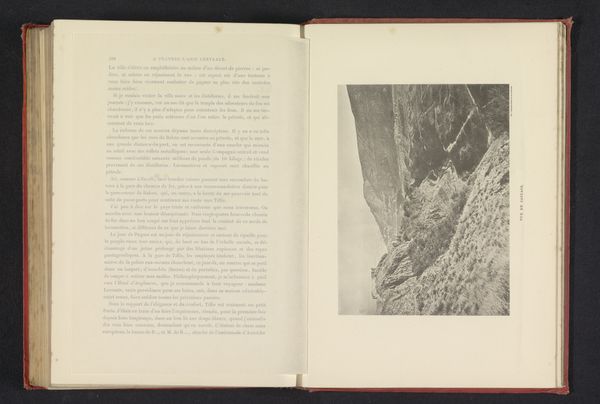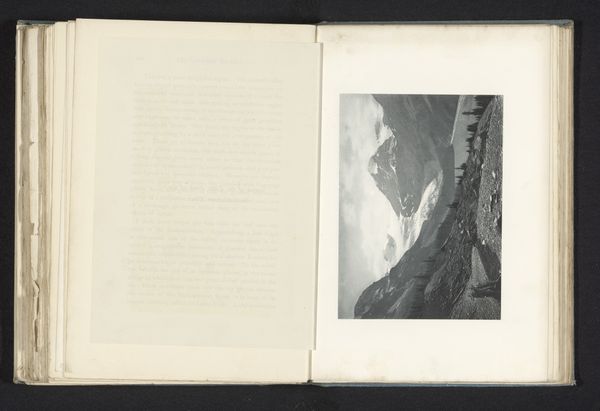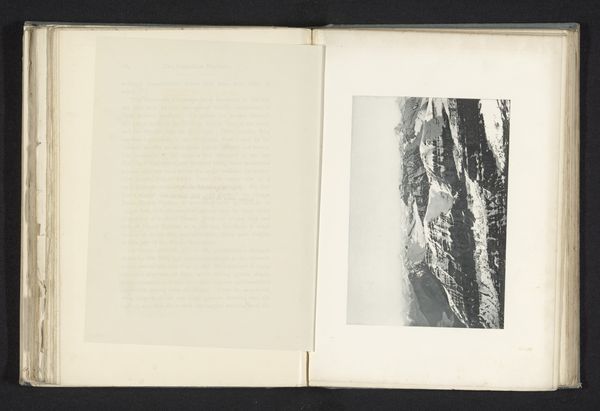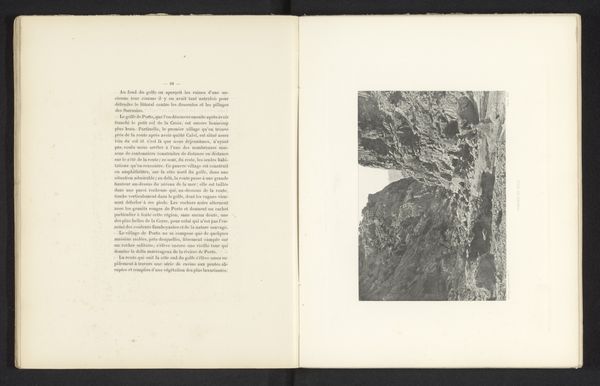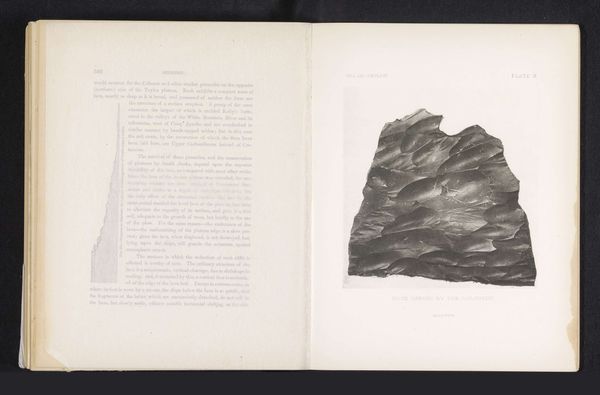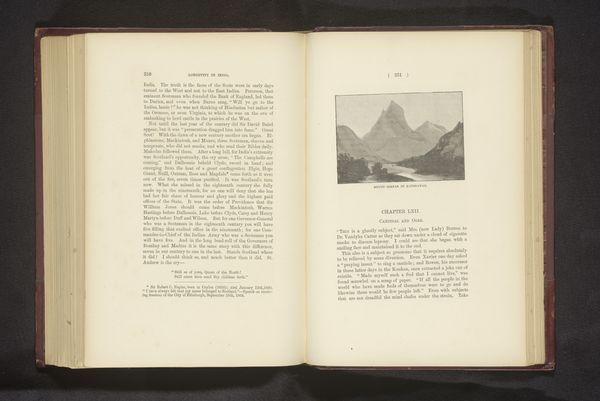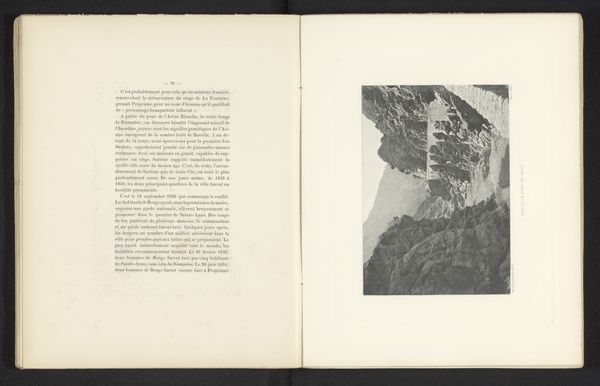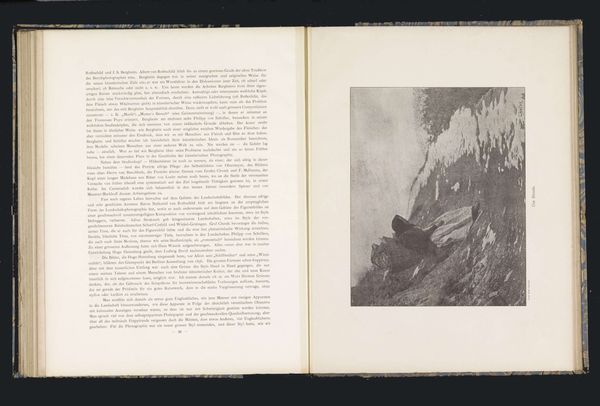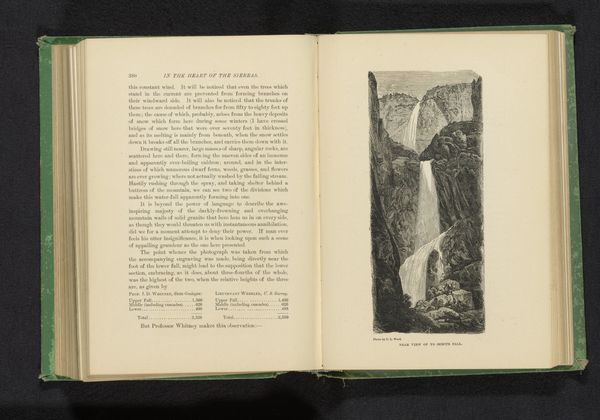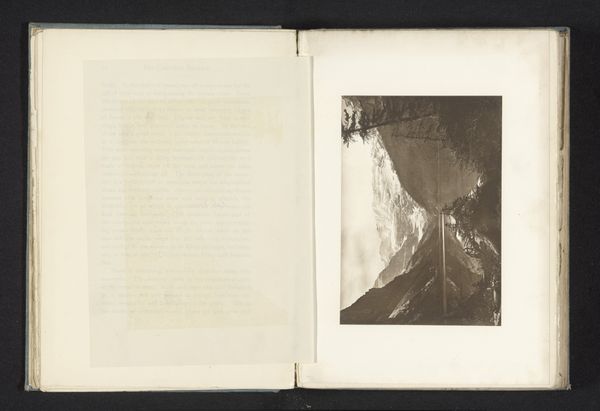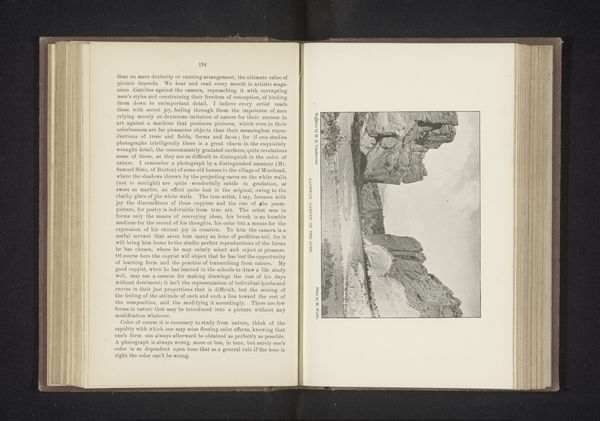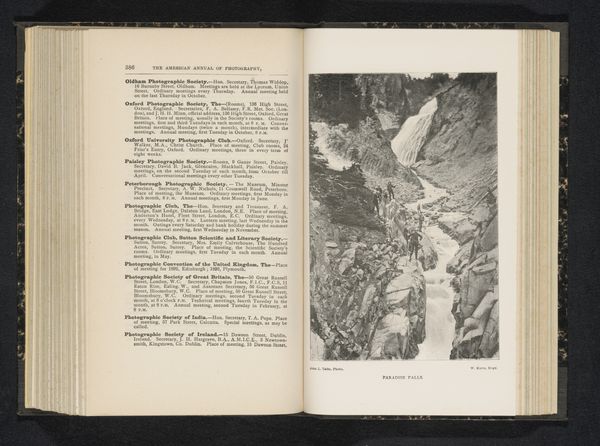
photography, gelatin-silver-print
#
landscape
#
photography
#
mountain
#
gelatin-silver-print
#
hudson-river-school
Dimensions: height 218 mm, width 162 mm
Copyright: Rijks Museum: Open Domain
Curator: I am struck by the sheer verticality, the way these rock formations reach for the sky. It's almost gothic in its grandeur, wouldn't you agree? Editor: Indeed. Formed long before the camera recorded it, Timothy O'Sullivan’s gelatin-silver print "Rain sculpture, Salt Creek canon, Utah" is an 1875 reminder of geologic processes on this continent, brought to us by the artist's hand and alchemic processes. Curator: Speaking of processes, it makes me wonder about the indigenous peoples who lived alongside and within such dramatic landscapes. How did they perceive this scale, this seemingly timeless presence? How were their voices muted or co-opted by the very act of documentation, of “discovering” what was already known? Editor: I see that. Let’s consider how this print also speaks to the relationship between resource extraction and photographic practices in the American West. O’Sullivan was originally hired to document geological surveys; the image, therefore, is itself raw data transformed via labor, silver, gelatin. Curator: A point well taken! It becomes then a record not only of the land, but of the industrialized gaze, and all the power dynamics it carries. This photograph is not an innocent observation, but an assertion. It also makes me question the myth of the 'sublime' within these landscapes. Does O'Sullivan reproduce the awe without engaging in criticality of it, or providing space to reflect on the cost of resource exploitation? Editor: Possibly so. The very process of gelatin-silver printing allows for great detail and nuance, and O’Sullivan surely employed those qualities for aesthetic and informational purposes alike. To dwell in labor, however, helps us to acknowledge and situate it: the manual dexterity in the dark room becomes a physical grounding force for the image as more than merely artistic practice. Curator: I concur. By attending to the tangible history of labor we restore voices lost from it, acknowledging that even aesthetic appreciation must sit shoulder to shoulder with critical inquiry. Editor: And that a critical inquiry brings forth both philosophical depth and human acknowledgement.
Comments
No comments
Be the first to comment and join the conversation on the ultimate creative platform.
